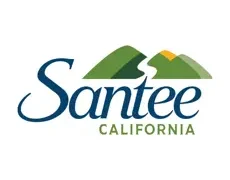
The City is creating a new Broadband Master Plan to expand broadband coverage in historically underserved areas.
Data shows over 40% of households in under-represented areas of the City do not have a wireline broadband subscription. “It’s important that all San Diegans and San Diego communities have reliable and affordable access to the internet,” said Jonathan Behnke, chief information officer for the City’s Department of IT. “With the Broadband Master Plan initiative, we look forward to learning how to better serve San Diego and eliminate the digital equity divide.”
A series of focus groups will be held in the coming weeks to gather input and shape the City’s guiding principles for internet access. Residents are encouraged to take an internet speed test and an internet access survey.
One goal of the Broadband Master Plan is to provide an analysis of current broadband access and make recommendations to increase access, adoption, and affordability in identified locations. The master plan’s primary aim is to increase the availability and affordability of broadband in the City with a focus on underserved communities, low-income housing residents, and public-serving City facilities. The plan will also ensure that San Diego meets State broadband speed standards.
The City was recently honored as a 2024 Visionary Trailblazer by the National Digital Inclusion Alliance for its SD-Access 4 All program. As part of the City’s commitment to closing the digital divide, San Diego Access 4 All offers several services including public Wi-Fi at over 300 locations, hotspots available for checkout at libraries, and free computer and internet skill-building classes.
San Diego Community Newspaper Group caught up with City PIO Anthony Santacroce, Kelsey Baird, and Maiten Mowreader with the City’s IT Department, to find out more about the new Broadband Master Plan.
Why does San Diego need a Broadband Master Plan? “This is truly a national movement to prioritize digital access and digital equity providing internet access to technical and digital skills making them accessible to all,” answered Baird, who added City Library and Park and Recreation Departments are cooperating in this master-planning effort.
How will we bring broadband to underserved communities? “One of the things we’re analyzing is how to expand the reach of fiber technology, which is the gold standard for broadband access,” replied Mowreader. “We’ll be looking at expanding the reach of fiber within the city. The challenge is that fiber is expensive to build out.”
Fiber-optic “fiber” internet is a broadband connection that can reach speeds of up to 10 Gigabits per second. The technology uses fiber-optic cable, which can send data as fast as about 70% of the speed of light.
“We can work with the city on costs (of expanding broadband) once we have information mapped out about broadband access across the City,” noted Santacroce. “We’ll be able to look at different neighborhoods, assessing their needs, and work to see how we can address providing greater and more equitable broadband access.”
What happens once the broadband master plan is completed? “The next step would be to form a comprehensive plan which would prioritize implementation (of broadband) in areas of greatest need,” said Baird.
“We intend to provide access to broadband and digital technology for residents at libraries and in community and recreation centers,” noted Mowreader.
“We want to make sure the City works with community partners and people in the community to help us get the most honest and accurate information, so we can plan and put something together that is very useful,” said Santacroce.
For more information visit the Broadband Master Plan webpage. To find out more about San Diego’s Access 4 All program including a map of accessible wi-fi locations, visit sandiego.gov/sdaccess.
Digital Divide: Refers to the gap between individuals, households, businesses, and geographic areas at different socio-economic levels concerning both their opportunities to access information and communication technologies (ICTs) and their use of the internet for a wide variety of activities.
Digital Inclusion: Refers to the activities necessary to ensure that all individuals and communities, including the most disadvantaged, have access to and use of ICTs. This includes five elements: affordable, robust broadband internet service; internet-enabled devices that meet the needs of the user; access to digital literacy training; quality technical support; and applications and online content designed to enable and encourage self-sufficiency, participation, and collaboration. Digital Inclusion requires intentional strategies and investments to reduce and eliminate historical, institutional, and structural barriers to access and use technology.












Discussion about this post